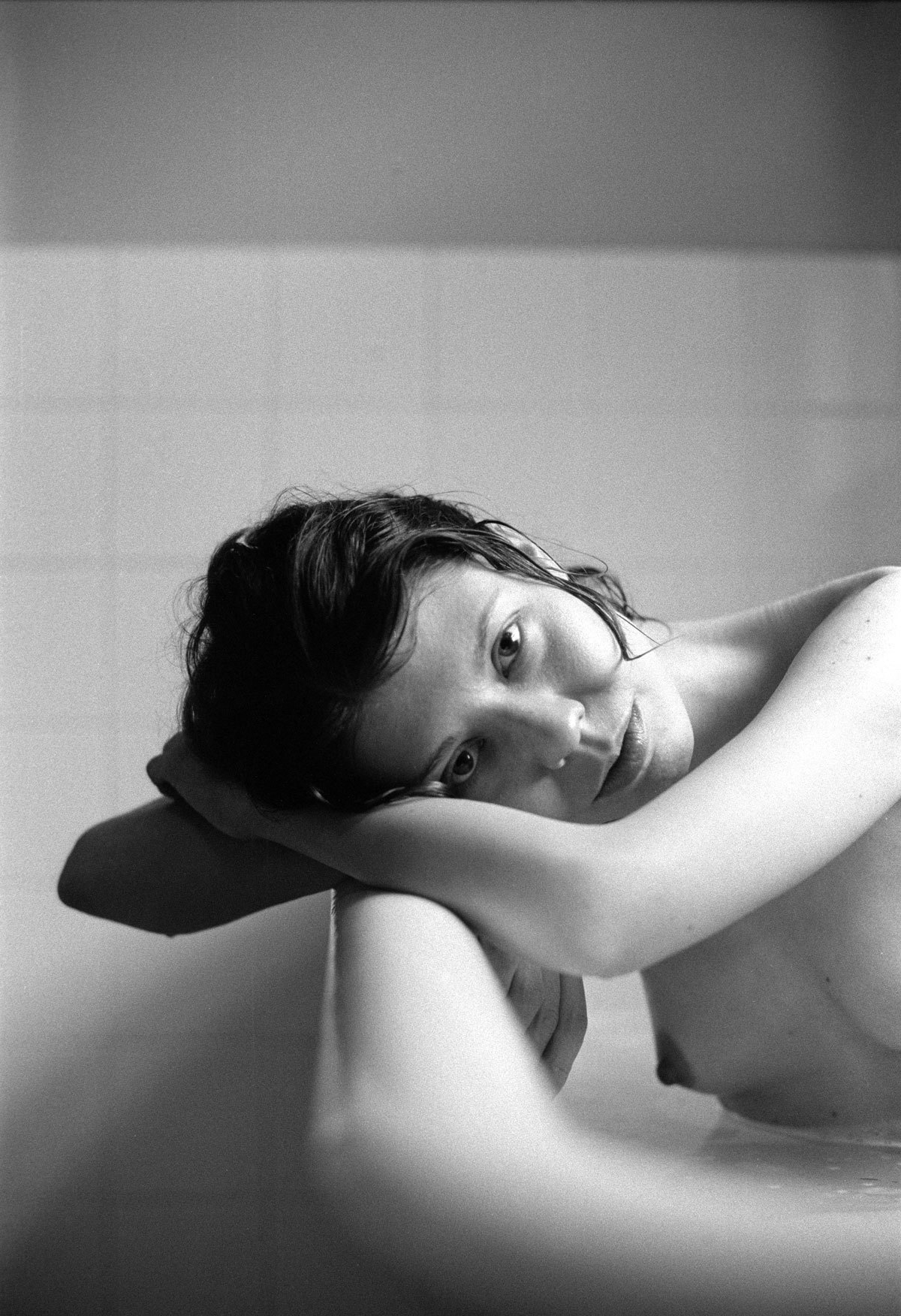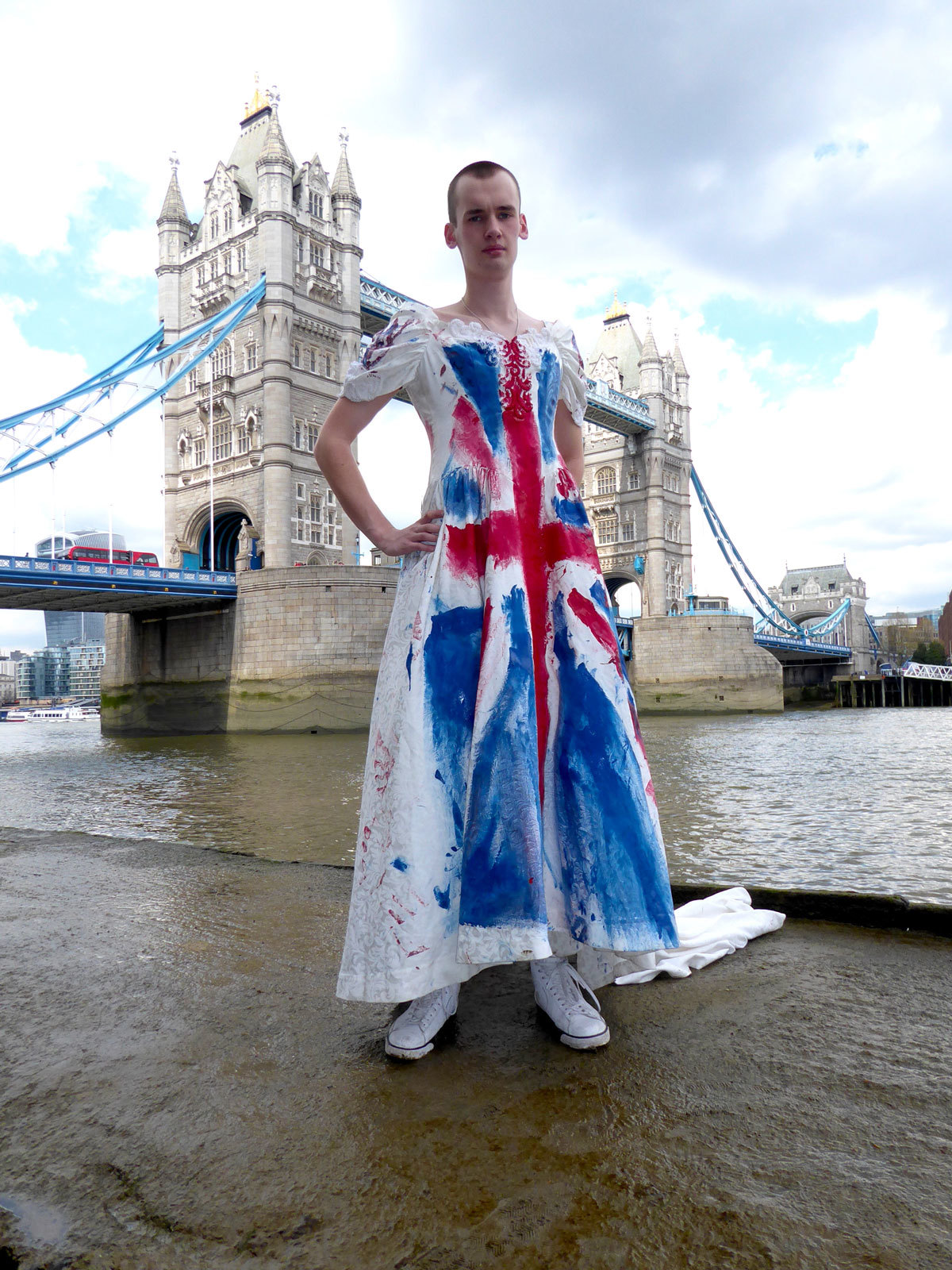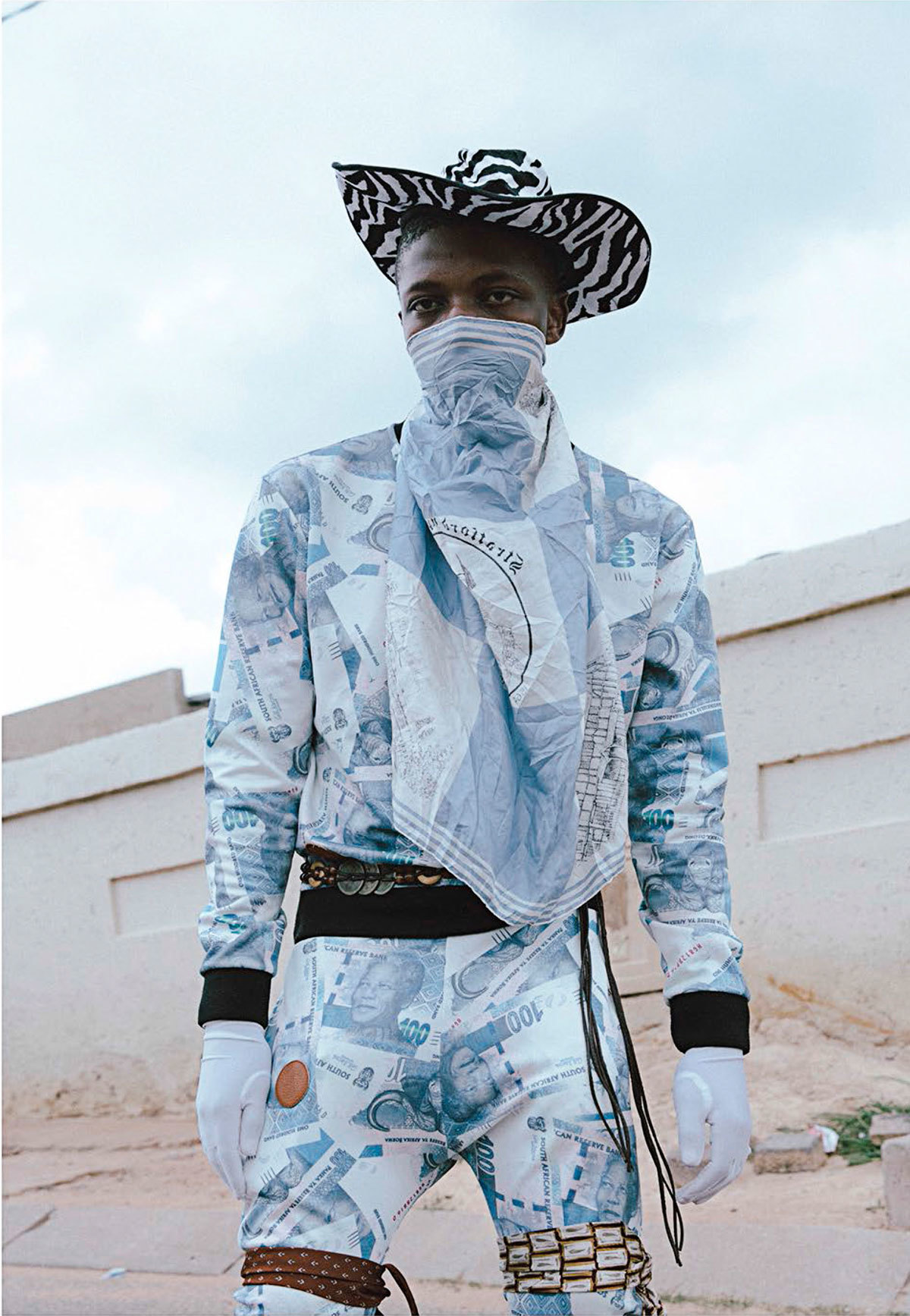Ibrahim Kamara
What’s the name of your project?
My project is called 2026, a collaboration between myself and Johannesburg photographer Kristen Lee Moolman, 2026 challenges heteronormative attitudes to self-expression through fashion. Imagining how men might clothe their bodies in ten years. 2026 will be showing at Somerset house in July.
How did the idea for it come about?
The idea came about during my internship with my mentor and friend Barry Kamen, I told him I wanted to travel and create work, something he encouraged me to do.
What do you hope changes within the fashion industry?
I hope for more diversity on stories told, paid jobs for young people coming into the industry.
What statement do you live by?
Nothing is right or wrong, everything goes.
Who are your cultural icons?
Barry Kamen, Prince, Grace jones, john Galliano, Katie Price.
What’s your favorite piece of clothing and why?
My synched waist trouser I got from South Africa, The lord works in miraculous ways.
What would you say to i-D’s readers?
Employ me!

Millie Horton
What’s the name of your project?
SEINE.
How did the idea for it come about?
Women have always been an integral part of my work. The concept came from a desire to document the endless possibilities of what a ‘creative space’ can be, specifically how it affects the women who inhabit them.
What do you hope changes within the fashion industry?
The way we look at mental health. I wrote my dissertation on the link[s] between creativity and mental health within the fashion industry and I was told by a tutor I wasn’t allowed to because it “isn’t relevant”. What a fucking joke.
What statement do you live by?
“We go through life. We shed our skins. We become ourselves.”
Who is your cultural icon?
Patti Smith.
What’s your favourite piece of clothing and why?
A 70s Roncelli studded jacket.

Sam Ross
What’s the name of your project?
ASBO.
How did the idea for it come about?
The idea for ASBO came from ignorance. I was immersed in this world of no one really knowing what was beyond the M25, and thinking everything in the UK was so ‘idyllic’ and prosperous. I think we are living in a politically charged time and not enough young people are talking about it or even aware of issues that are affecting them or will do in the future. ASBO is about generating a discussion, a platform to vent told through fashion and creative medias. I want people to join the debate and get angry.
What do you hope changes within the fashion industry?
Out with the old in with the new, burn down the corporations. More self-employed young people doing what they are good at.
What statement do you live by?
Don’t stop being curious.
Who is your cultural icon?
The Joker.
What’s your favourite piece of clothing and why?
My very self indulgent Saint Laurent cowboy boots, bloody painful but killers.
What would you say to i-D’s readers?
Go out and take a camera.

Gareth Wrighton
What’s the name of your project?
The Maul.
How did the idea for it come about?
I’ve been playing around with the idea of e-commerce as a sort of performative medium for a couple of years now. I designed and made a collection under the loose premise of; ‘It’s the end of the world, and we have to make-do-and-mend with all this weird branded crap that won’t rot away.’ The result is this rag-tag gang of zombie killers, wearing throwaway pop culture mascots like badges of honour. With heroes like these, who needs villains? The clothes are a really luxe type of awful; dresses made of polyester ‘Avengers’ duvet covers, hand knit acrylic sweaters and balaclavas, resin-encapsulated-fag-end iPhone cases and elaborate hand embellished purses; one of which is inspired by my favourite eco-terrorist; Poison Ivy.
To promote the collection I built my virtual Maul as a playable video game. The video game is built as an uncanny dream sequence set in my parallel universe, and you control the main character as you make your way around an abandoned shopping mall full of corpses wearing my collection. It is available to download and play on your desktop, and really it’s about exploring the potential of fashion communication in a non-linear format. Books and magazines are bound by a spine, and fashion film is eternally caught in a beginning, middle and end. With video game engines, I can build my own world and let the reader find their own narrative within it. This is the future of fashion communication.
What do you hope changes within the fashion industry?
My work sort of reacts to the current state of fashion so I’m all about this ridiculous route it’s going right now. It’s so easy to critique and channel these dystopian vibes into my work, all this ugliness, the fastness, the environmental and humanitarian crimes committed, they all feed into this dialogue I’m constructing on the grotesque in pop culture. I’m still in awe at how little changed after the 2013 Rana Plaza tragedy. That takes some serious western selective blindness. Only the fashion industry could ignore something of that magnitude and do nothing about it that succinctly. If anything has to change it’s this throwaway culture in high street fashion; it’s not healthy and it’s not a look. I don’t want my most enduring contribution to society to be landfills full of crappy t-shirts and ill-fitting jeans.
What statement do you live by?
“If you’re good at something never do it for free.”
Who is your cultural icon?
Batman and all the villains in his Rogues Gallery. I could only ever dream of constructing such an elaborate parallel universe as Gotham city, so many looks, moments, backstories and situations…
What’s your favourite piece of clothing and why?
I hand knit a jumper for the Maul and it’s the first thing I’ve ever made that I can call truly sublime. The designs were all hand drawn in a matter of seconds, but then painstakingly realised through 120 hours of hand knitting on needles. It’s a testament to my obsessive nature as a maker, and an introspective response to the fast fashion bullshit I highlighted above.
What would you say to i-D’s readers?
“It’s not who you are underneath, it’s what you do that defines you.”

Campbell Addy
What’s the name of your project?
My project is called Nii. Under the umbrella of Nii you have both the casting and modelling agency, Nii Agency and the printed publication Niijournal.
How did the idea for it come about?
The idea for Nii was milling about in mind for a while, but I wasn’t sure how I’d realise my ideas. Photography is my first love, however I believed my photography could give more of an impact in the form of other mediums, such as the printed publication which then gave birth to the casting and modelling agency. I wanted to express my conflicting issues surrounding my race, sexuality, body, nationality and personality. During the latter part of 2015 I visited my family in Ghana and friends in New York City. Both trips were decisive moments where I realised the topics of discussions I was touching on in my work were also being played with in both the States and West Africa. Despite living thousands of miles apart, the people I met were also plagued with the same issues like the lack of representation within the creative sector. I may have been very naive to think that only my friends and I experienced such things, but hearing/seeing it first hand its a totally different thing. It ignited a fire inside of me where I wanted to not only comment on the conversation within my community, but I wanted to respond to it in a way that’d bring other like minded creatives together.
What do you hope changes within the fashion industry?
My circle of friends include people from Watford, Sierra Leone, Ghana, Oregon, Indonesia, South Korea, Vietnam and many others. They are all beautiful and intelligent people, I’d like the fashion industry to portray them how I see them. We come in many shapes and forms and I believe it’s imperative to showcase our diversity. I’d like to see a multitude of people from various backgrounds being given the same opportunities that others seem to get. I’d also like to see the younger generation be compensated correctly, there’s a lot of free work that happens within the creative industry, however we are providing a service so shouldn’t we be paid in full?
What statement do you live by?
Live, not survive.
Who is your cultural icon?
Andre 3000.
What’s your favourite piece of clothing and why?
It’s a wrap apron I got from a small boutique called ‘Sparks Clothing’, I can wear it with or without trousers and I don’t feel underdressed !
What would you say to i-D’s readers?
Be vigilant and have respect for your craft!
Credits
Text Greg French
